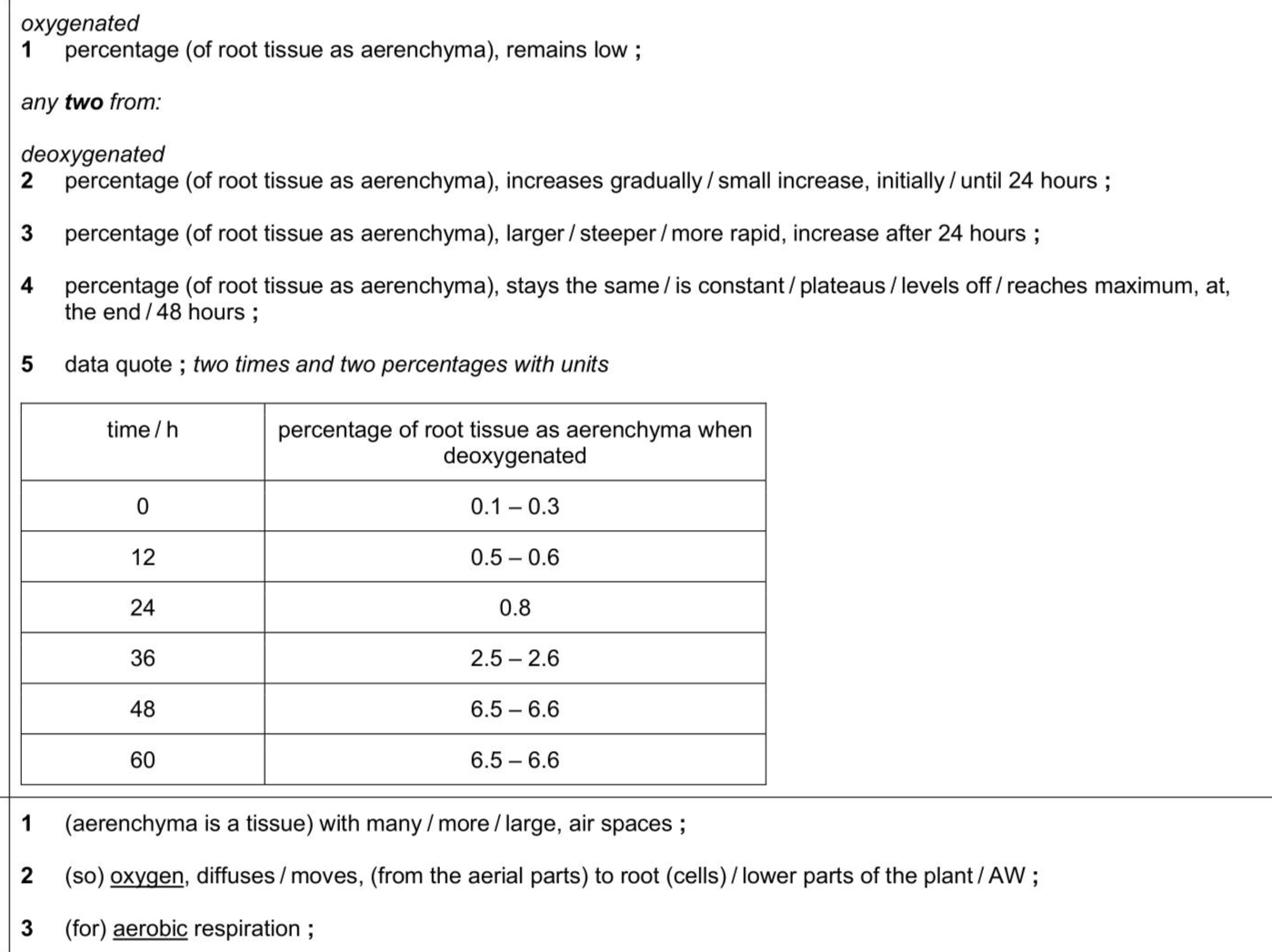The grass Oryza sativa is grown as a food crop to produce rice. Rice plants are adapted to grow with their roots submerged in water. An experiment was carried out to investigate the development of aerenchyma tissue in the roots of rice plants. - 10-day old seedlings were grown with their roots submerged in water. - Some were grown in water that was kept oxygenated and others were grown in water that did not contain oxygen (deoxygenated). - At 12 hour intervals, some seedlings from each group were removed and transverse sections of their roots were prepared and examined. - The sections were cut at the same distances from the root tip to check for development. - The percentage of root tissue that had developed into aerenchyma tissue was calculated. . . . . . . (ii) Describe the structure of aerenchyma and explain how this is an adaptation that allows roots of rice plants to be submerged in water. . . . . . .
Exam No:9700_s25_qp_44 Year:2025 Question No:7(a)
Answer:

Knowledge points:
14.2.1 explain that stomata respond to changes in environmental conditions by opening and closing and that regulation of stomatal aperture balances the need for carbon dioxide uptake by diffusion with the need to minimise water loss by transpiration
14.2.2 explain that stomata have daily rhythms of opening and closing
14.2.3 describe the structure and function of guard cells and explain the mechanism by which they open and close stomata
14.2.4 describe the role of abscisic acid in the closure of stomata during times of water stress, including the role of calcium ions as a second messenger
7.1.1 draw plan diagrams of transverse sections of stems, roots and leaves of herbaceous dicotyledonous plants from microscope slides and photomicrographs
7.1.2 describe the distribution of xylem and phloem in transverse sections of stems, roots and leaves of herbaceous dicotyledonous plants
7.1.3 draw and label xylem vessel elements, phloem sieve tube elements and companion cells from microscope slides, photomicrographs and electron micrographs
7.1.4 relate the structure of xylem vessel elements, phloem sieve tube elements and companion cells to their functions
Solution:
Download APP for more features
1. Tons of answers.
2. Smarter Al tools enhance your learning journey.
IOS
Download
Download
Android
Download
Download
Google Play
Download
Download
